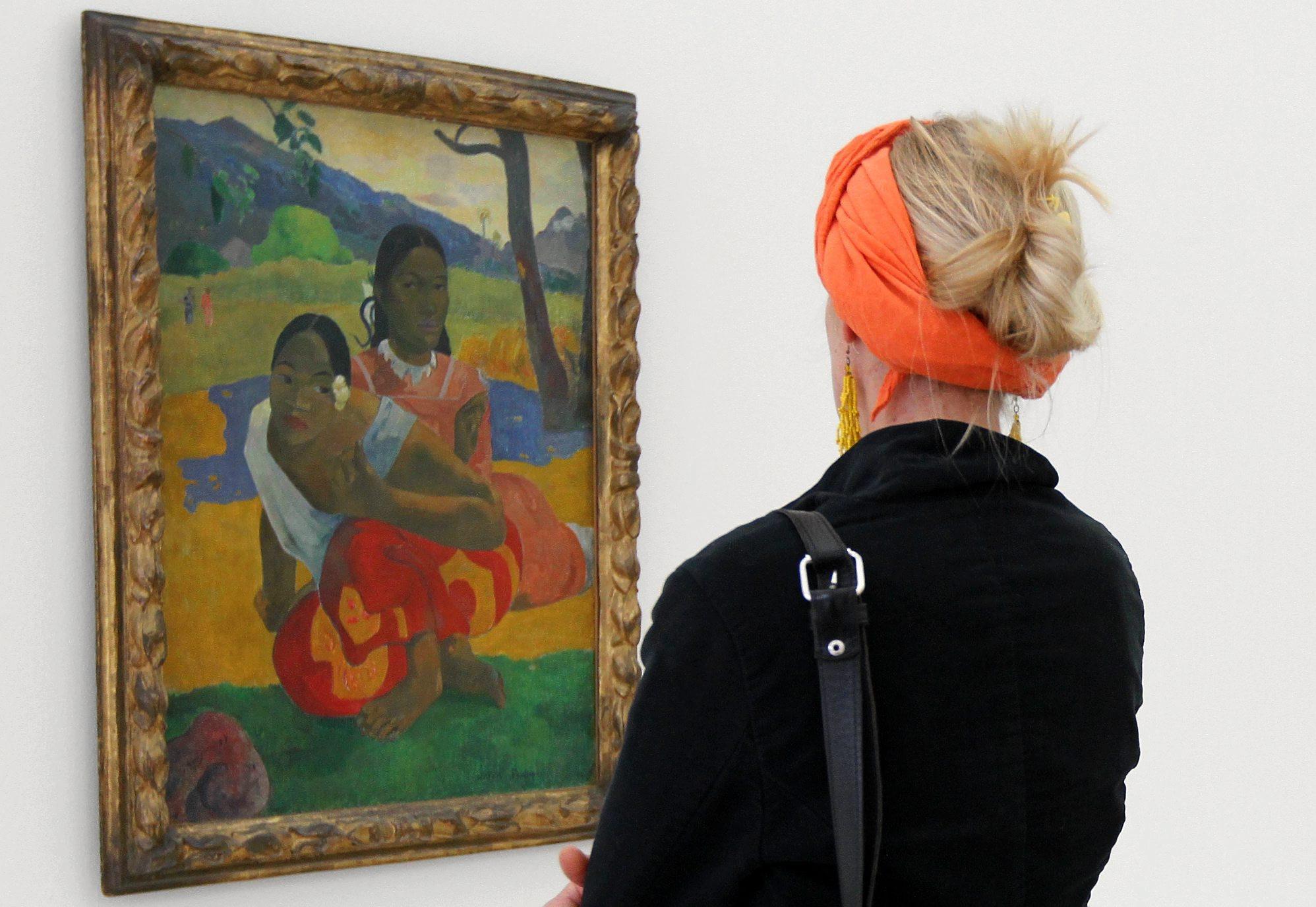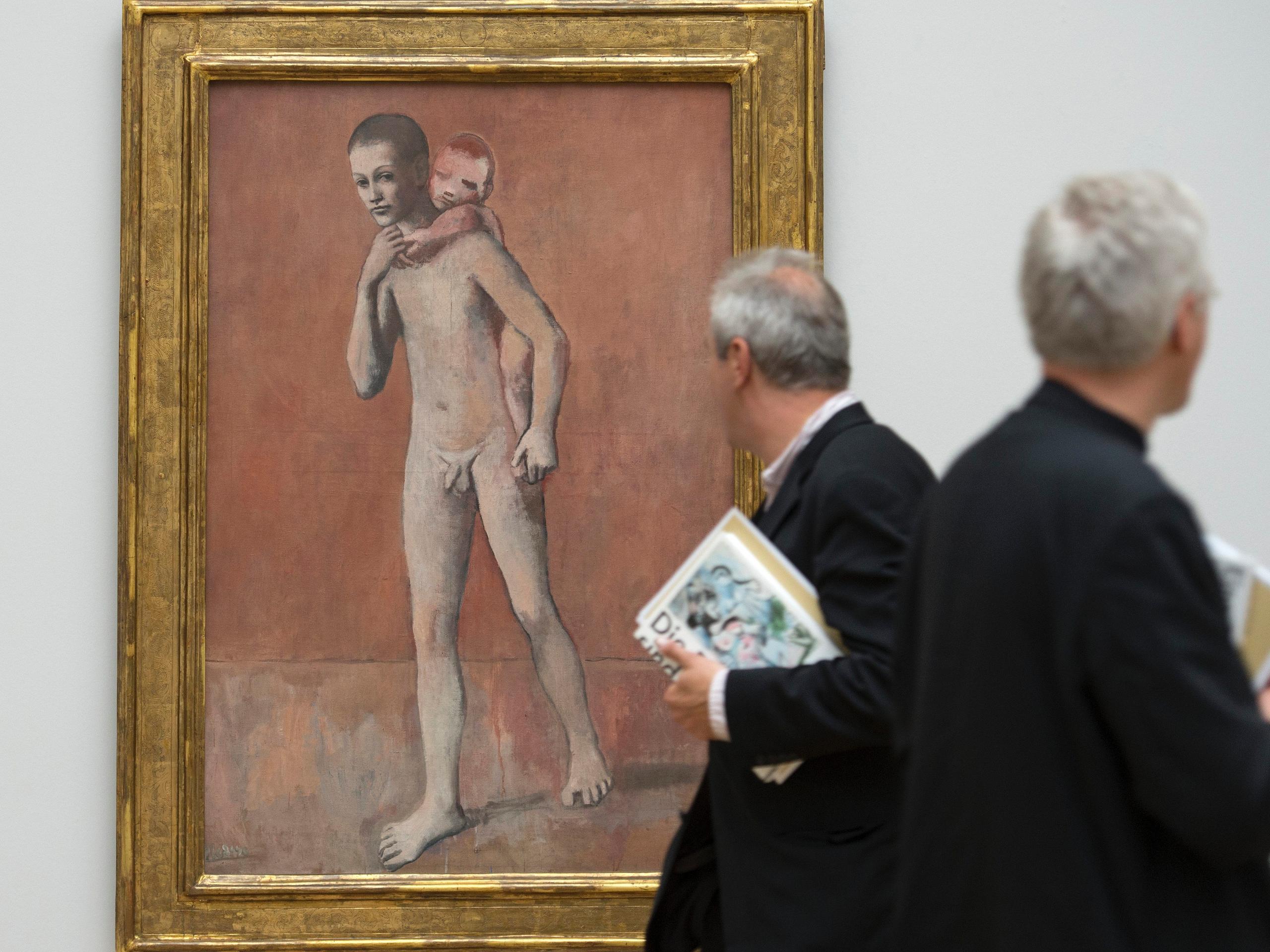What is behind the Gauguin sale to Qatar?

The unconfirmed sale to Qatar of a Gauguin masterpiece has brought to light the tensions that arise when an unrivalled buying power enters into the art market.
If the price of $300 million (CHF265 million) for the languid beauties of ‘Nafea faa ipoipo’ (When will you marry) is confirmed, it will be by far the highest price ever paid for a painting.
The record has been held until now by another modernist masterpiece, ‘The card players’ by Paul Cézanne that was sold in 2011 to the same Qatar museums authority for $250 million (CHF221million) – equally unconfirmed – four times the highest public price ever paid for a work by Cézanne.
The 1892 Gauguin painting, currently on view at Beyeler foundation in Basel, is part of a collection owned by the Rudolf Staechelin family foundation, entrusted to the Basel fine arts museum upon the death in 1946 of its founder.
The closing of the Basel museum until April 2016 for renovation has been put forward as the reason behind the Staechelin family’s decision to end the loan agreement, but the situation now appears to be much more complex.
The founder’s grandson, also named Rudolph Staechelin, recently resigned from the museum’s board and has spoken bitterly about the attitude of the Basel city authorities with regard to the collection and the terms of the loan.
In an interview in the Basler ZeitungExternal link newspaper on February 7, Staechlin spoke of uncertainty about the future direction the fine arts museum will take under a still-to-be-named new director, and is dissatisfied with the way the local authorities handled the selection of a new president for the Board of Trustees.
The priceless Staechelin collection
Like other eminent Swiss collectors, the entrepreneur Rudolf Staechelin, whose family had benefited from the expansion of Basel at the end of the 19th century, entered into art around 100 years ago with a sharp eye and ample funds. His focus on French impressionism and post-impressionism has made the collection one of the most valuable in the world.
But passion for art is not necessarily inherited. In 1967 Rudolph’s son, Peter, whose small airline company, Globe, went bankrupt following a crash that took several lives, decided to sell off several paintings from his father’s collection to meet his financial obligations. He sold a Monet, ‘Le petit port de mer’, a Sisley ‘Le village au sablon, a Cézanne’s ‘Portrait de l’artiste’ and a major work by Vincent van Gogh ‘La Berceuse’ which went for $4 million to the private US collectors Mr. and Mrs. Walter H. Annenberg.

However, when it came to parting with two Picassos ‘Deux Frères’ and ‘Arlequin assis’ there was a public outcry, and the then-astonishing amount of CHF8.4 million ($9.5 million) was raised by the public authorities and the population. “The entire city became a (fundraising) fair. It was raining money,” the director of the Kunstmuseum, Franz Meyer, wrote. Picasso was so delighted by the outcome that he donated a further three works. The event is still referred to with fondness today, although it did nothing to elevate the reputation of the family.
Peter’s son, Rudolf, is not encumbered with nostalgia either. The former Sotheby’s executive and president of the family foundation states matter-of-factly that the Gauguin sale took place because market conditions were favourable.
In the Basler Zeitung he mentioned the need for diversification: “Ninety per cent of the family’s portfolio is tied up in the art works.”
This is not the first time Basel has been deprived of the collection. From 1997 to 2002, it was transferred to the US and loaned for three years to the Kimbell museum in Fort Worth, Texas, while discussions took place in Switzerland concerning the impact of Unidroit, and later on of the laws that clamped down on the export of cultural goods. The collection is now incorporated as a trust in the US.
Although Staechelin stated that no further works would be sold, he also said that the collection would not return to Basel, even after the museum reopens, according to the Swiss newspaper.
Priced beyond reach
One of the paradoxical, if not perverse, effects of the recent conflation of prices on the art market, is the risk that some of the art will disappear from the public eye. No rallying cry could have saved the Gauguin with public matching funds, as was the case with the Picassos in 1967, if the sale is indeed concluded at the whispered price.
Qatar, the tiny Persian Gulf country that is said to spend $1.3 billion (CHF1.2 billion) annually on culture, has built three museums by I.M. Pei, Jean Nouvel and Jean-François Bodin in its capital Doha – but none yet to house the western art that it has purchased.
The purchasing is led by Sheika al Mayassa bint Hamad bin Khalifa al-Thani, chairwoman of Qatar museums and sister to Qatar’s emir. Only 32, she spearheaded the record-breaking purchases of a Rothko and a Damien Hirst in 2007.
Quoted by the New York TimesExternal link Patricia G. Hambrecht, the chief business development officer for Phillips auction house, said: “They’re the most important buyers of art in the market today. The amount of money being spent is mind-boggling.”
Sarah Cascone in Art NetExternal link is less enthusiastic. In a remarkably well-documented article, she intimates that there are cracks in the Qatar veneer and that the spending is not sustainable. She mentions payment defaults, real estate projects dropped and the slash of funding.
The working conditions on the construction sites of the FIFA World Cup due to take place in Qatar in 2022 have come under fire by human rights associations, which may be why Staechelin is evasive about revealing the identity of the buyer.
See it while you can
Furthermore, very few museums have the means to compete on the market, said Martin Roth, director of the London Victoria & Albert MuseumExternal link in a recent talk organised by the Financial Times at the Davos World Economic Forum
To stay in the game, some have even resorted to selling: on February 3, New York’s Museum of modern art (MoMA) sold a Monet for $10.8 million (CHF10 million) in order to purchase more contemporary art. ‘Les peupliers de Giverny’ has now entered into a private collection.
Rudolf Staechelin knew that the removal of his grandfather’s art collection from the city where it was constituted would draw criticism, but says he’s used to it. “The purpose of a family trust is to support the family, not to preserve a collection,” Basler Zeitung quotes him as saying. He explained that he didn’t move “in the circles of so-called high society” and that he wasn’t a collector because he didn’t have the means.
Paul Cézanne: ‘La maison du docteur Gachet à Auvers’ 1893, ‘Verre et pommes’ 1879/8
Paul Gauguin: ‘NAFEA faa ipoipo’ 1892 (sold), Paysage au toit rouge’1885
Edouard Manet: ‘Tête de femme’ 1870
Claude Monet: ‘Temps calme, Fécamp’ 1881
Vincent van Gogh: ‘Le Jardin de Daubigny’ 1890 (one of van Gogh’s most important paintings), ‘Tête de femme’ 1887 and, ‘Nature morte: Les harengs saurs’ 1886
Pablo Picasso: ‘Arlequin au loup’ 1918
The Straechelin collection will travel to Spain and the US before its fate will become known. It will be presented together with the Obersteg collection:
18 March–13 September 2015 at the Museo Nacional Centro de Arte Reina SofíaExternal link and Museo Nacional del PradoExternal link in Madrid.
10 October 2015–10 January 2016 at the Phillips CollectionExternal link in Washington DC.
A great many art collections were started in Switzerland throughout the 20th century. Many collections became museums, some in the name of their founders:
Arthur and Hedy Hahnloser (Villa Flora, Winterthur, which recently closed), Richard Bühler, Sidney Brown (Museum LangmattExternal link ), Georg and Oskar Reinhart (Museum Oskar ReinhartExternal link, Winterthur), Emil Bührle (Foundation E. G. Bührle CollectionExternal link, Zurich), Josef Müller (Barbier-MüllerExternal link, Geneva). Despite due diligence in provenance checks, some may still contain Nazi-looted art, especially those constituted from the thirties onward.
Other collectors have made generous long-term loans to museums:
Rudolf Staechelin (Basel, until recently), Jakob Briner, Oscar Miller, Karl and Jürg Im Obersteg (Basel), Othmar Huber, René and Madeleine Junod (La Chaux-de-Fonds), Hermann Rupf, Raoul La Roche, Hélène de Mandrot, Arthur Stoll, Eduard Sturzenegger, Robert von Hirsch, Ernst Kofler-Truniger.
In more recent years, some collecting families have funded purpose-built venues: Beyeler (Beyeler FoundationExternal link in Basel), Bechtler (Bechtler Museum of Modern ArtExternal link in Atlanta, Ga.), Martin Bodmer (Fondation Martin BodmerExternal link, Cologny/Geneva), Hoffmann (SchaulagerExternal link in Basel) and Roche (Tinguely MuseumExternal link in Basel). The late Baron Hans Heinrich Thyssen-Bornemisza’s collection is housed at the Prado in Madrid and Uli Sigg’s Chinese contemporary art has in great part been donated to the upcoming M-museum in Hong Kong. Egyptian-born oil magnate Robert Gandur is buying his graces into the museums of Vaud and Geneva.

In compliance with the JTI standards
More: SWI swissinfo.ch certified by the Journalism Trust Initiative
You can find an overview of ongoing debates with our journalists here. Please join us!
If you want to start a conversation about a topic raised in this article or want to report factual errors, email us at english@swissinfo.ch.